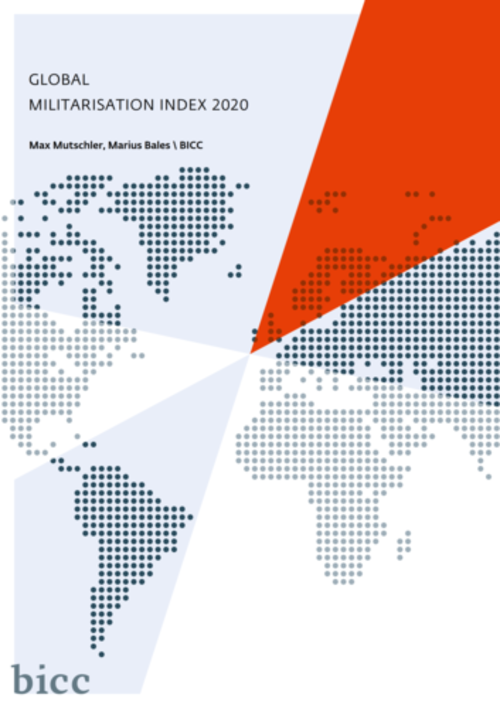Publications
Global Militarisation Index 2020
Release Date
2020
Language
- German
- English
Topics
- –
Every year, bicc’s Global Militarisation Index (GMI) presents the relative weight and importance of a country’s military apparatus in relation to its society as a whole. The GMI 2020 covers 151 states and is based on the latest available figures (in most cases data for 2019). The index project is financially supported by Germany’s Federal Ministry for Economic Cooperation and Development.
In this year’s GMI ranking, the ten countries that provided the military with particularly large amounts of resources in relation to other areas of society are Israel, Armenia, Oman, Bahrain, Singapore, Saudi Arabia, Brunei, Russia, Kuwait and Jordan.
The authors Max Mutschler and Marius Bales put the regional focus of the GMI 2020 on Europe (eastern Europe/ NATO and EU-countries) as well as the Asia–Pacific region and look in-depth into the role of the United States there. Russia (ranked 8th) continues to sustain one of the largest military forces in the world. The European NATO countries, especially Baltic and eastern European countries, are continuing to arm themselves, pointing to ongoing tensions with Russia. The still smouldering conflict between Armenia (ranked 2nd) and Azerbaijan (ranked 16th) over the Nagorno-Karabakh region continues to keep militarisation in the South Caucasus at a very high level. One look at the Top 10 shows that all countries in the Middle East are highly militarised by global comparison—only four countries are not from this region. The strategic rivalry between China (position 98) and the United States (position 27) for influence in the Asia–Pacific region intensifies the mutual threat perceptions and contributes to an arms build-up there.
Finally, the GMI 2020 looks at the link between militarisation and health security. A comparison with the Global Health Security (GHS) Index shows that countries with an average level of militarisation perform best in health security overall. In the wake of the COVID-19 pandemic, the public budgets of many countries are likely to come under severe pressure in the coming years as a result of new borrowing. This may also affect militarisation. Should the economic performance drop proportionally more than military spending, this would increase the level of militarisation. But it is also possible that prevention against future threats to health security will be given precedence over defence policy, and that significant cuts in military spending will be introduced. Which of the two scenarios will play out is likely to depend on the political priorities countries will choose.
PDF-Download

PDF-Download

Cite as
Document-Type
BICC Global Militarization Index
Publisher
bicc
Place
Bonn



